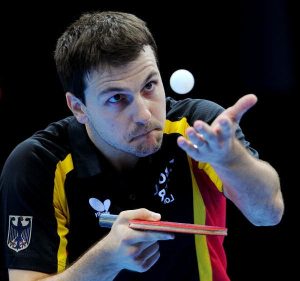Ping pong rules scoring, Table tennis, commonly known as ping pong, is a game that combines speed, technique and accuracy.

Among the various elements that make up the game, serving stands out as a crucial component. A well-executed serve can set the tone for the rally, giving the server an early advantage.
However, mastering the serve isn’t just about skill; it’s also about adhering to the rules. Understanding what constitutes aping pong rules scoring is essential for both competitive play and casual games.
The Basics of a Legal Ping Pong Serve
The International Table Tennis Federation (ITTF) sets the official rules for table tennis, including those governing the serve. According to these rules, a serve must meet specific criteria to be considered legal. Here are the key points:
- Starting Position: The ball must be placed on the open palm of the server’s free hand, which must remain stationary and above the playing surface. This ensures the ball is visible to the opponent and the umpire.
- Ball Toss: The ball must be thrown vertically upwards at least 16 centimeters (about 6 inches) without imparting any spin. The toss must be near-vertical, ensuring the ball is visible at all times.
- Striking the Ball: The server must hit the ball as it descends without allowing it to touch anything other than the racket. The ball must first bounce on the server’s side of the table and then on the receiver’s side.
- Visibility: Throughout the serve, the ball must remain above the level of the playing surface and behind the server’s end line. The server’s free hand or arm must not obscure the ball.
- Order of Play: In doubles matches, the serve must be delivered diagonally from the server’s right-hand half to the receiver’s right-hand half of the table.
Read more: Scoring in ping pong
These rules are designed to ensure fairness and prevent any deceptive practices that could give ping pong rules scoring an unfair advantage.
Ping pong rules scoring in the game

Common Mistakes and Violations
Read more: What is the diameter of a tennis ball
Even seasoned players can inadvertently commit serving faults. Some common mistakes include:
- Inadequate Toss: Failing to toss the ball the required 16 centimeters or imparting spin during the toss.
- Hidden Serve: Using the body or arm to obstruct the opponent’s view of the ball.
- Incorrect Striking: Hitting the ball while it is still in an upward trajectory or allowing it to touch the net assembly.
- Each of these violations can lead to the serve being called illegal, potentially resulting in a point for the opponent.
Strategy and Tactics in Serving
While the rules set the framework for legal serves, players often develop various techniques to maximize the effectiveness of their serve within these boundaries. The key to a successful serve lies in the combination of speed, spin, and placement.
- Spin Variations: Skilled players use topspin, backspin, and sidespin to make the ball’s trajectory unpredictable. These spins can be challenging for the receiver to counter effectively.
- Placement: A serve aimed at the corners or edges of the table can force the receiver into a difficult position, often leading to weak returns that the server can capitalize on.
- Speed and Deception: Alternating between fast, aggressive serves and slower, more controlled ones can keep the opponent guessing. Deceptive serves, where the server disguises the type of spin until the last moment, are particularly effective.
Adapting to the Opponent
An effective server also pays close attention to the opponent’s weaknesses. For instance, serving to the backhand side of a player with a weaker backhand can yield advantageous results. Observing and adapting to the opponent’s style and preferences is crucial in high-level table tennis.
Practicing Legal Serves
Master the serve, regular practice is essential. Players should focus on:
- Consistency: Ensuring that each serve meets the legal requirements every time.
- Variation: Developing a range of serves with different spins and placements.
- Precision: Being able to place the ball exactly where intended on the opponent’s side of the table.
- Practicing with a partner or coach can provide valuable feedback and help identify any unintentional faults.
The serve in table tennis is not just a ping pong rules scoring way to start the rally but a strategic weapon that can dictate the flow of the game. Understanding and adhering to the rules of a legal ping pong serve is crucial for fair play and effective competition.
By combining technical skill with strategic thinking, players ping pong rules scoring can turn their serves into a significant advantage, setting the stage for victory in this fast-paced and dynamic sport.